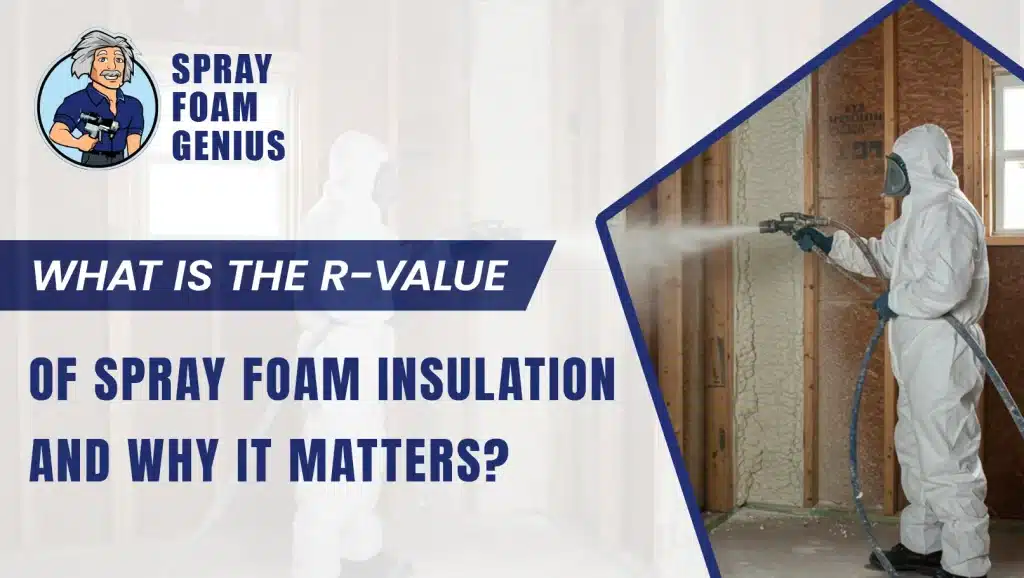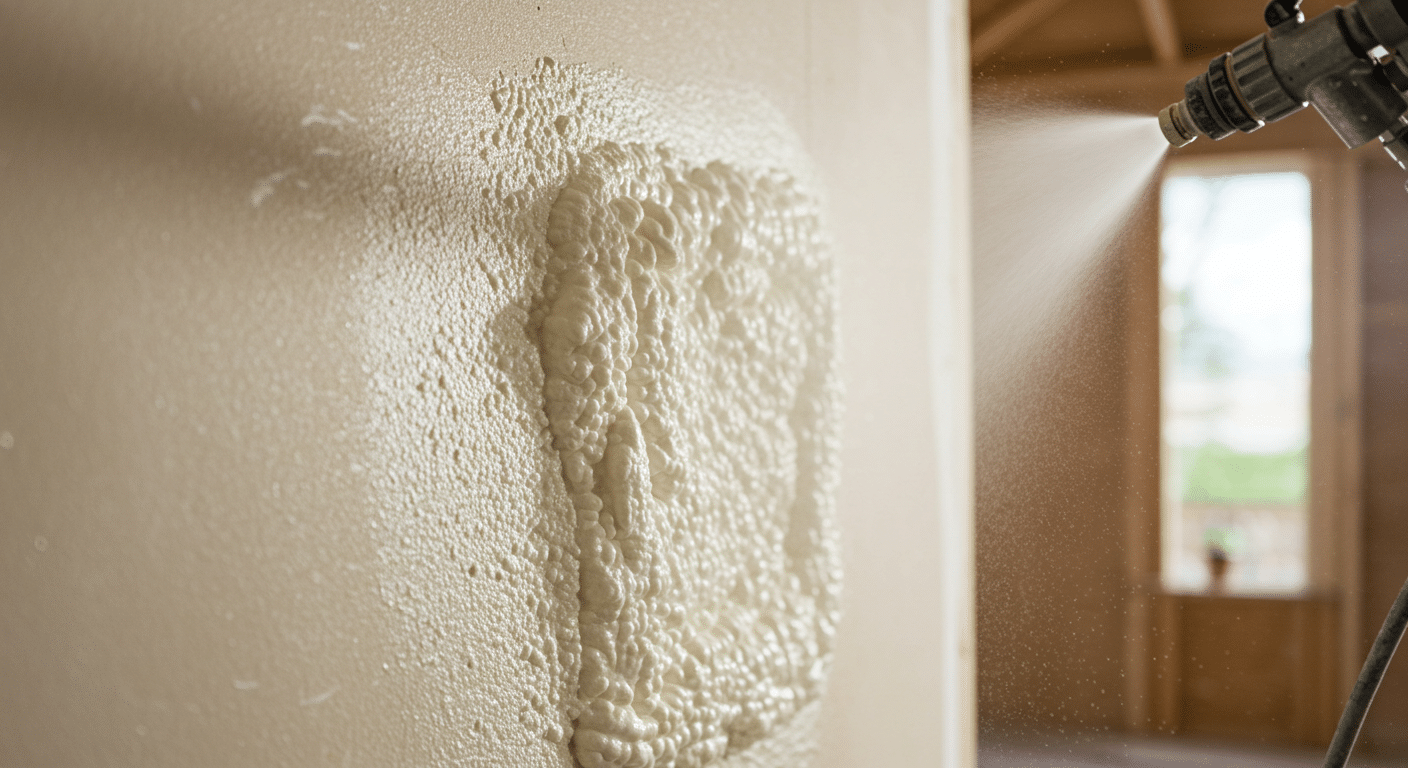
The R-value of spray foam insulation measures its thermal resistance—how well it resists heat flow. Closed-cell spray foam has an R-value of about R-6 to R-7 per inch, making it one of the highest-performing insulation materials available. Open-cell spray foam typically offers R-3.5 to R-4 per inch. A higher R-value means better energy efficiency, reduced heat loss, and lower HVAC costs. Choosing the right R-value is critical for meeting building codes, improving comfort, and maximizing long-term energy savings.
Key Factors Affecting Spray Foam R-Value
| Factor | Closed-Cell Foam | Open-Cell Foam |
| R-Value per Inch | R-6.0 to R-7.0 | R-3.5 to R-4.0 |
| Moisture Resistance | High | Low |
| Air Barrier Capability | Excellent | Moderate |
| Application Areas | Roofs, basements, exterior | Attics, interior walls |
| Structural Strength | Adds rigidity | Soft, flexible |
R-Value Performance: Pros and Cons
Pros
- High Energy Efficiency: Closed-cell foam offers one of the best R-values per inch.
- Moisture Barrier: Closed-cell acts as both insulation and vapor barrier.
- Space Saving: Requires less thickness to achieve desired R-value.
Cons
- Cost: Higher R-value foam (closed-cell) is more expensive.
- Rigidity: Less flexible, making application harder in some cavities.
- Open-Cell Limitations: Lower R-value and not suitable for high-moisture areas.
Closed-Cell vs. Open-Cell Foam: Impact on R-Value

| Feature | Closed-Cell Spray Foam | Open-Cell Spray Foam |
| R-Value per Inch | High — excellent insulation efficiency | Lower — less effective in extreme temperatures |
| Moisture Resistance | Acts as a moisture barrier | Absorbs moisture — not ideal for humid or damp areas |
| Structural Support | Adds rigidity and structural strength | Soft and flexible — offers no structural reinforcement |
| Best Use Cases | Exterior walls, basements, roofing | Interior walls, ceilings, and soundproofing |
| Cost | Higher upfront cost | More affordable |
| Climate Suitability | Ideal for extreme climates and high-humidity zones | Better suited for moderate climates and dry interior spaces |
Why R-Value Matters for Energy Codes and Savings
Building codes often specify minimum R-values for different zones to ensure adequate thermal protection. Using spray foam with the correct R-value not only ensures compliance but also improves indoor comfort and reduces energy costs. Higher R-value insulation slows heat transfer more effectively, decreasing HVAC load and utility bills. For homeowners and builders, prioritizing proper R-value during installation leads to long-term efficiency and ROI.
Spencer is a Google ranking expert and SEO consultant who has helped businesses in the spray foam marketing industry achieve their online marketing goals. Spray Foam Genius Marketing has a proven track record of success, having achieved some impressive results for his clients.

